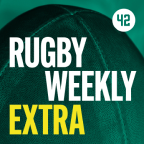YOUR ILIOTIBIAL BAND (ITB) is a ligament that runs down the outside of your thigh from your hip to your shin. It attaches to the knee and helps to stabilise and mobilise the joint.
Anyone who participates in a sport that involves a lot of running is susceptible to what’s called ITB band syndrome, where this ligament becomes tight or inflamed, and quite painful.
Causes of it include running on banked surfaces, running on worn-out shoes or simply just running too many miles.
How do I know if I have it?
Pain or swelling on the outside of the knee is one way of telling whether or not you have ITB syndrome. So to check, bend your knee or knees to a 45 degree angle and if you’ve pain on the outside of your knee it’s possible that you may have ITB band syndrome.
Should I be worried?
You know the first thing to do: decrease running or the activity that leads to it immediately. However, it wouldn’t be enough to stop you playing a game. It probably falls under the ‘niggly injury’ category.
Being told to desist from playing is not what athletes want to hear or will even consider doing, so it’s worth noting that swimming, cycling and rowing can all be done as alternative forms of cardio.
What else can be done?
A physiotherapist will also be able to correct the issue. Foam rolling and side stretches have been known to help it, while a visit to a podiatrist should help with your foot position. Feet that turn inward are believed to be a cause of ITB syndrome.
Any specific stretches?
Try doing a side hip bridge. To do this, lie on your side with your feet propped on an elevated surface about a foot off the ground. Push your bottom foot down and lift your torso using your hip muscles while keeping a stable spine. Return to the starting position. Perform 10-30 reps.










Not to make light of it but 3.5 times more likely than very unlikely is still very unlikely. Loads of players played football and don’t have any issues and loads of people never played football and do have issues. The study also pointed out that deaths in general under the age of 60 were hugely reduced in those that played football compared to the general population. There is a lot more in this than just heading footballs gives you a neurodegenerative disease and the media reporting of it has been very irresponsible imo.
@Dino: Still, it’s significant enough to warrant a change in training practises & age grade football. Better giving people the knowledge so that they can make the choice. I obviously think people should participate in sport and stay active, but to do so with the full knowledge of associated risks and benefits.
@Joseph Blocks: is it significant enough? I haven’t seen anything to say it is. If the chances of football causing brain injury are 0.0000001 then 3.5 times this is 0.00000035 which is still insignificant. Don’t just read the headline
Ban heading and we might actually have a better game….especially in this part of the world!! Kids & teens definitely should not be heading the ball full stop… and they might actually learn to play ‘foot’ ball
Shocking although good more is known now. Balls are lighter too
@dublindamo: The dry weight has actually changed very little. However until the eighties balls would get very heavy when wet, which could well have caused the most damage when heading.